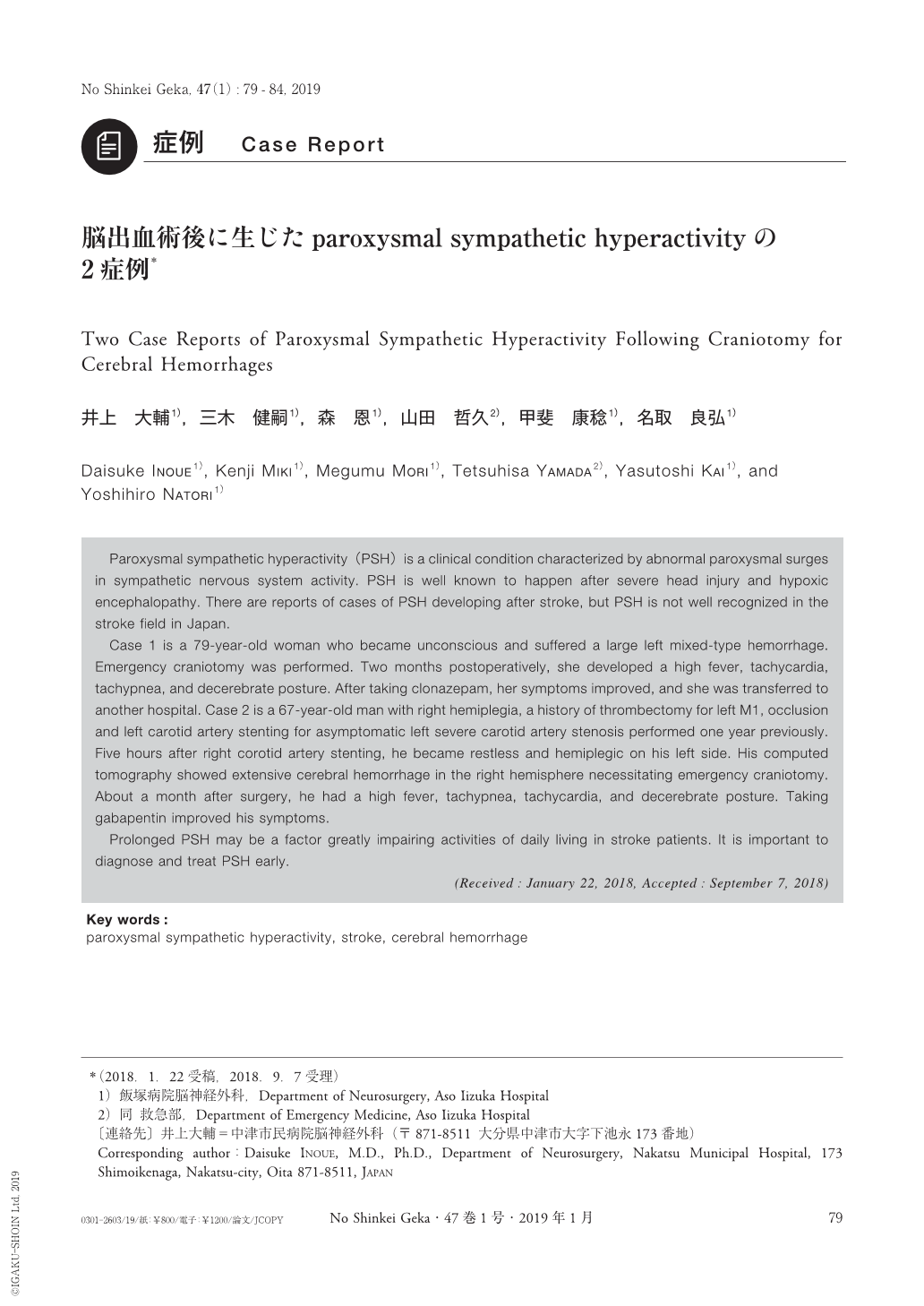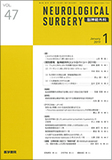Japanese
English
- 有料閲覧
- Abstract 文献概要
- 1ページ目 Look Inside
- 参考文献 Reference
Ⅰ.はじめに
Paroxysmal sympathetic hyperactivity(PSH)は,重症頭部外傷後や低酸素脳症後に,頻脈・高血圧・過呼吸・高体温・発汗などの交感神経の亢進症状と,ジストニアなどの過剰な筋緊張の亢進が発作性・断続的に持続する病態である11).上記以外の原因疾患として,脳卒中後に発症した症例もいくつか報告されているが稀である5,6,11).本邦では頭部外傷後や低酸素脳症,小児例の報告は散見されるが4,8,9,17),脳卒中領域においてはPSHの病態があまり認知されていないのが現状である.今回われわれは,脳出血の開頭手術後に発症したPSHの2症例を経験したので報告する.
Paroxysmal sympathetic hyperactivity(PSH)is a clinical condition characterized by abnormal paroxysmal surges in sympathetic nervous system activity. PSH is well known to happen after severe head injury and hypoxic encephalopathy. There are reports of cases of PSH developing after stroke, but PSH is not well recognized in the stroke field in Japan.
Case 1 is a 79-year-old woman who became unconscious and suffered a large left mixed-type hemorrhage. Emergency craniotomy was performed. Two months postoperatively, she developed a high fever, tachycardia, tachypnea, and decerebrate posture. After taking clonazepam, her symptoms improved, and she was transferred to another hospital. Case 2 is a 67-year-old man with right hemiplegia, a history of thrombectomy for left M1, occlusion and left carotid artery stenting for asymptomatic left severe carotid artery stenosis performed one year previously. Five hours after right corotid artery stenting, he became restless and hemiplegic on his left side. His computed tomography showed extensive cerebral hemorrhage in the right hemisphere necessitating emergency craniotomy. About a month after surgery, he had a high fever, tachypnea, tachycardia, and decerebrate posture. Taking gabapentin improved his symptoms.
Prolonged PSH may be a factor greatly impairing activities of daily living in stroke patients. It is important to diagnose and treat PSH early.

Copyright © 2019, Igaku-Shoin Ltd. All rights reserved.


